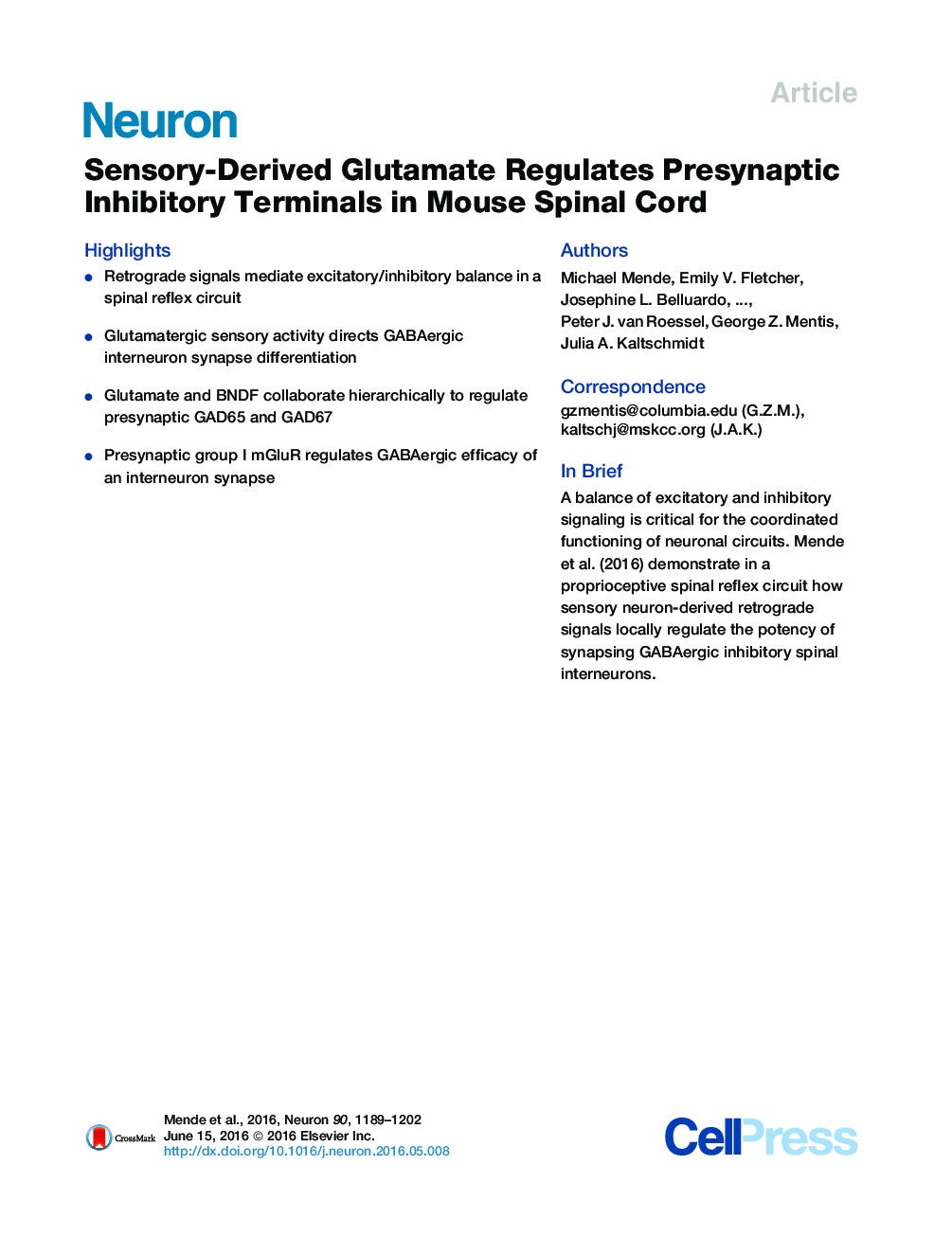| Article ID | Journal | Published Year | Pages | File Type |
|---|---|---|---|---|
| 4320681 | Neuron | 2016 | 14 Pages |
•Retrograde signals mediate excitatory/inhibitory balance in a spinal reflex circuit•Glutamatergic sensory activity directs GABAergic interneuron synapse differentiation•Glutamate and BNDF collaborate hierarchically to regulate presynaptic GAD65 and GAD67•Presynaptic group I mGluR regulates GABAergic efficacy of an interneuron synapse
SummaryCircuit function in the CNS relies on the balanced interplay of excitatory and inhibitory synaptic signaling. How neuronal activity influences synaptic differentiation to maintain such balance remains unclear. In the mouse spinal cord, a population of GABAergic interneurons, GABApre, forms synapses with the terminals of proprioceptive sensory neurons and controls information transfer at sensory-motor connections through presynaptic inhibition. We show that reducing sensory glutamate release results in decreased expression of GABA-synthesizing enzymes GAD65 and GAD67 in GABApre terminals and decreased presynaptic inhibition. Glutamate directs GAD67 expression via the metabotropic glutamate receptor mGluR1β on GABApre terminals and regulates GAD65 expression via autocrine influence on sensory terminal BDNF. We demonstrate that dual retrograde signals from sensory terminals operate hierarchically to direct the molecular differentiation of GABApre terminals and the efficacy of presynaptic inhibition. These retrograde signals comprise a feedback mechanism by which excitatory sensory activity drives GABAergic inhibition to maintain circuit homeostasis.
